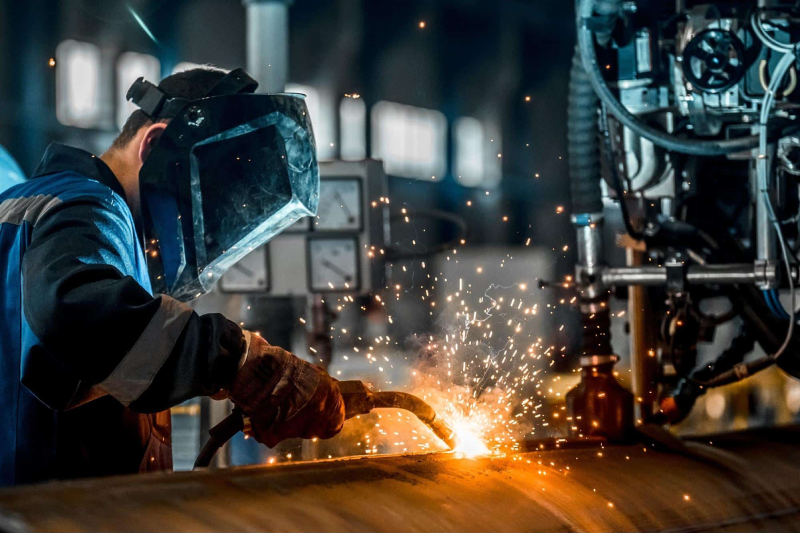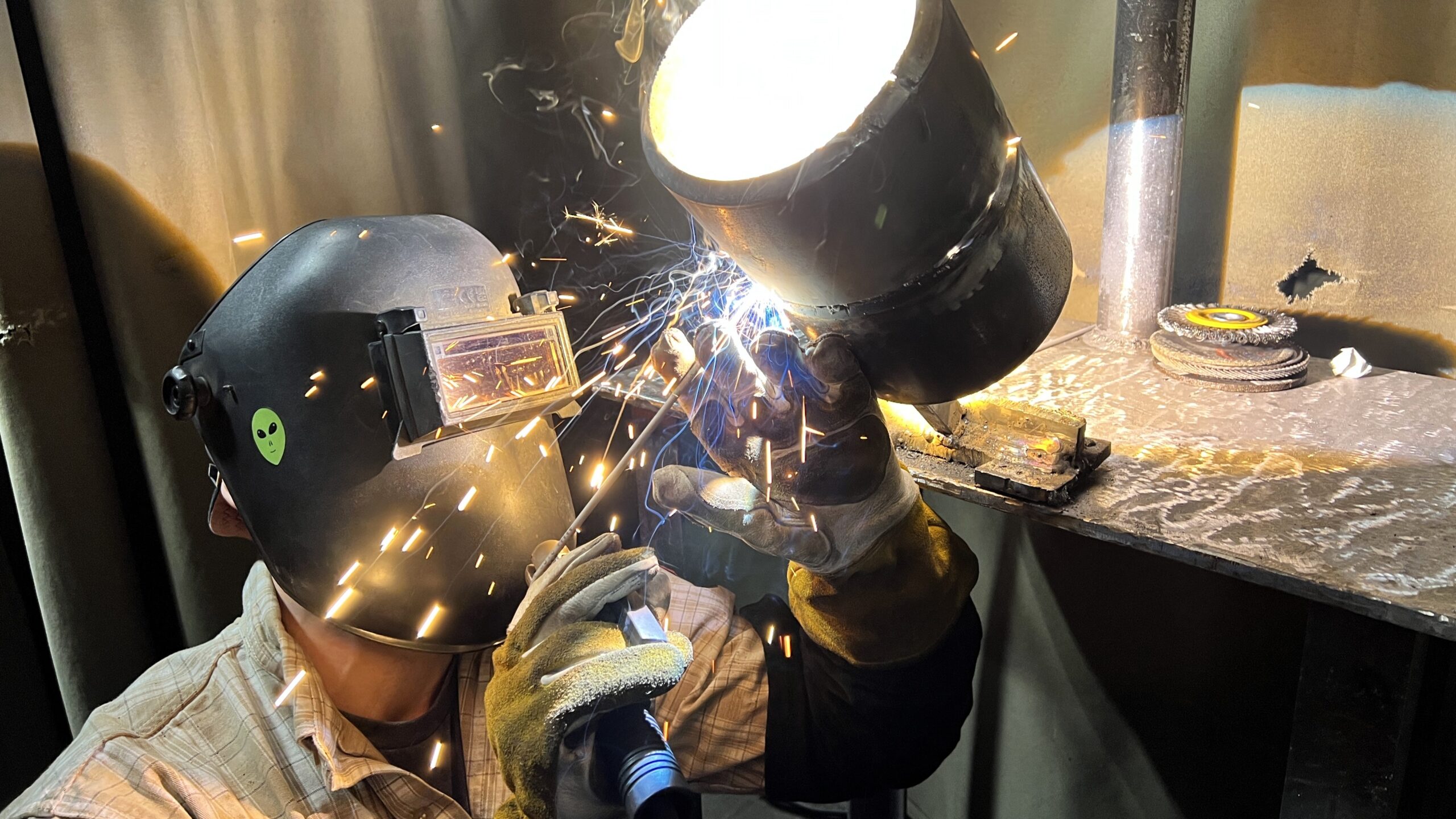Typical Welding Repair Service Issues and Exactly How to Address Them Successfully
Welding repair work commonly experience a variety of issues that can jeopardize the integrity of the end product. Common issues include insufficient penetration, porosity, and imbalance, among others. Each defect provides special difficulties that call for details methods for resolution. Comprehending these issues is essential for welders aiming to improve their skills and outcomes. This discussion will certainly explore these common welding repair work problems and reliable techniques to address them.
Inadequate Infiltration
Inadequate penetration occurs when the weld steel falls short to totally fuse with the base material, leading to weak joints and prospective structural failures. This problem typically comes from inadequate heat input, incorrect electrode angle, or improper welding speed. Welders may come across insufficient infiltration as a result of a miscalculation of the essential parameters for a particular product thickness or type. Additionally, contamination on the base material's surface can prevent effective bonding, exacerbating the trouble. To address insufficient infiltration, welders need to guarantee suitable setups on their tools and preserve a clean job surface area. Regular examination of welds is advised to recognize any kind of deficiencies early, enabling prompt adjustments and the prevention of endangered structural honesty in bonded assemblies.
Porosity
Porosity is a typical problem in bonded joints that materializes as little gas bubbles caught within the weld metal. This defect can compromise the integrity of the weld, resulting in decreased strength and prospective failure under stress and anxiety. Belgrade Fabrication. Porosity normally emerges from contamination, moisture, or incorrect welding techniques, which permit gases to run away right into the liquified weld swimming pool. To deal with porosity, welders ought to ensure appropriate surface preparation, keep a tidy working setting, and utilize ideal welding parameters. In addition, picking the appropriate filler material and shielding gas can mitigate gas entrapment. Normal inspection and screening of welds can aid recognize porosity early, guaranteeing prompt restorative actions are taken, therefore maintaining the high quality and reliability of the welded structure
Misalignment
Misalignment in welding can emerge from different aspects, consisting of improper setup and thermal expansion. Comprehending the origin creates is essential for efficient resolution. A number of improvement strategies are offered to realign parts and guarantee structural stability.
Root causes of Imbalance
Welding imbalance typically stems from a selection of underlying concerns that can jeopardize architectural honesty. One primary cause is incorrect fit-up of components before welding, which can cause spaces and irregular surface areas. Variations in thermal development during the welding procedure can likewise cause distortion, particularly if the products being signed up with have various coefficients of growth. Furthermore, poor clamping and fixturing might stop working to hold components securely in location, bring about movement throughout welding. Improperly maintained equipment, including welding makers and devices, may present inconsistencies in the weld bead, more contributing to misalignment. Operator error, stemming from inadequate training or experience, can additionally play a considerable role in developing misaligned welds.

Adjustment Strategies Readily Available
Addressing misalignment efficiently requires a mix of restorative strategies customized to the particular problems handy. One usual technique is making use of jigs or components to hold elements in the right setting throughout welding, making certain consistent positioning. Furthermore, pre-heating the products can help in reducing distortion and enhance fit-up. For significant imbalance, mechanical realignment strategies, such as making use of hydraulic jacks or clamps, can be used to fix the position before welding. Post-weld heat treatment might also be essential to eliminate anxieties brought on by imbalance. Careful assessment and adjustment throughout the configuration phase can avoid imbalance issues from ending up being substantial problems, advertising a smoother welding process and improving general structural honesty.
Distortion
Distortion is a common difficulty in welding that can emerge from numerous factors, consisting of uneven heating & cooling. Comprehending the sources of distortion is crucial for carrying out efficient avoidance methods. Resolving this problem not only boosts structural integrity yet also improves the overall top quality of the weld.
Reasons for Distortion
When subjected to the intense warmth of welding, materials typically go through changes that can cause distortion. This sensation mostly develops from thermal expansion and contraction during the welding process. As the weld area heats up, the product broadens; upon cooling, it gets, which can produce internal stresses. Furthermore, irregular heating across a work surface can aggravate these stress and anxieties, resulting in warping or bending. The kind of material also plays a substantial role; metals with differing thermal conductivity and coefficients of expansion may react differently, bring about uncertain distortions. Furthermore, inadequate joint style and poor fixturing can contribute to imbalance during welding, boosting the possibility of distortion. Comprehending these reasons is vital for effective welding repair work and avoidance techniques.
Avoidance Techniques
Effective prevention methods for distortion during welding emphasis on controlling warmth input and making sure proper joint design. Maintaining a consistent warm input aids to minimize thermal growth and contraction, which can bring about distortion. Making use of techniques such as preheating the workpiece can additionally minimize the temperature level slope, promoting consistent home heating. Additionally, choosing ideal joint layouts, such as T-joints or lap joints, can boost stability and lower tension concentrations. Implementing proper fixturing to protect the work surfaces in area better aids in keeping positioning throughout the welding procedure. Staggered welding sequences can distribute warmth a lot more uniformly, protecting against localized distortion. By applying these methods, welders can substantially lower the likelihood of distortion and boost the total quality of their welds.
Fracturing
Cracking is a common concern encountered in welding repair services, typically resulting from numerous factors such as inappropriate air conditioning prices, product option, or insufficient joint prep work. The incident of splits can substantially compromise the integrity of the weld, leading to possible failures throughout procedure. To address this issue, welders have to first assess the origin creates, making sure that products are compatible and suitably selected for the certain application. Additionally, controlling the air conditioning rate during the welding procedure is vital; fast cooling can cause stress and lead to original site fracturing. Proper joint layout and preparation likewise add to decreasing the threat. Applying these approaches can boost weld top quality and durability, eventually decreasing the probability of splitting in completed weldments.
Incomplete Fusion
A considerable issue in welding repair services is incomplete fusion, which happens when the weld metal does not effectively bond with the base material or previous weld passes - Montana Mobile Welding and Repair Belgrade Welding. This defect can lead to weaknesses in the joint, possibly compromising the integrity of the bonded structure. Variables adding to incomplete fusion include not enough heat input, improper welding technique, and contamination of the surface areas being joined. To resolve this concern effectively, welders need to assure correct pre-weld cleaning and surface prep work, along with adjust their welding parameters to achieve adequate penetration and blend. Routine evaluation during the welding process can additionally help determine insufficient fusion early, permitting for prompt rehabilitative measures to enhance the overall quality of the weld
Overheating
While welding repair services can boost architectural integrity, overheating provides a considerable challenge that can lead to material deterioration. Excessive heat during welding can change the mechanical buildings of metals, leading to decreased stamina, enhanced brittleness, and warping. This phenomenon is particularly crucial in high-stress applications where architectural dependability is paramount. Recognizing overheating can involve visual inspections for discoloration or distortion, in addition to monitoring temperature level during the welding procedure. To mitigate the dangers related to getting too hot, welders must employ appropriate strategies, such as regulating heat input, readjusting traveling rate, and utilizing suitable filler products. In addition, applying pre- and post-weld warm therapies can aid restore material homes and boost the total top quality of the repair service, making certain long-term efficiency and safety and security.
Regularly Asked Inquiries
What Are the Typical Signs of a Welding Defect?

Exactly How Can I Examine My Welds for High quality?
To examine welds for high quality, one can utilize visual evaluations, ultrasonic screening, and radiographic approaches. Each strategy assures architectural stability, determines problems, and verifies adherence to defined criteria, inevitably boosting the integrity of the bonded joints.
What Security Safety Measures Should I Take While Welding?
When welding, one should focus on safety and security by using proper individual protective devices, guaranteeing appropriate air flow, securing flammable materials away, keeping a clean work area, and being mindful of surroundings to avoid crashes and injuries.
Can I Fix a Weld Without Renovating the Entire Joint?
Fixing a weld without renovating the entire joint is possible, relying on the damage (Montana Mobile Welding and Repair Belgrade Welding). Methods such over at this website as grinding, adding filler material, or utilizing a welding process can efficiently address specific defects while protecting the bordering framework
What Devices Are Important for Reliable Welding Repair Works?
Crucial devices for effective welding repair services consist of a welding device, wire brush, mill, protective equipment, clamps, and filler materials. Each device plays a crucial role in making certain high quality and safety and security during the fixing process. Porosity usually arises from contamination, wetness, or inappropriate welding techniques, which allow gases to escape into the molten weld pool. Inadequately conserved devices, consisting of welding machines and devices, might introduce inconsistencies in the weld bead, more adding to misalignment. When subjected to the extreme warmth of welding, materials frequently undertake changes that can lead to distortion. Cracking is an usual concern experienced in welding repair services, often resulting from Our site different aspects such as improper cooling prices, product selection, or inadequate joint preparation. A significant issue in welding repair work is insufficient fusion, which occurs when the weld metal does not properly bond with the base material or previous weld passes.